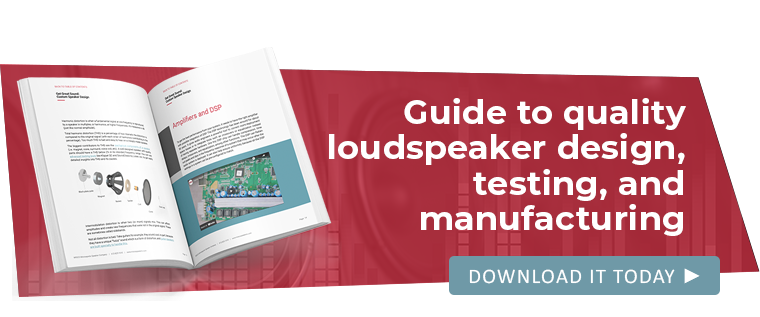Audio DSP Enables Cost-Effective Crossover Solutions
If you are lucky enough to own a Ferrari GTO you probably put some thought into making sure it has the right tires on it (or the engineers who designed it did). Matching the tires to the vehicle is critical to getting the performance you expect out of it. The same is true for sound and speakers.
Each individual speaker driver is engineered to deliver a specific frequency range best. You don’t want bass signals feeding into your tweeters. Producing a high-quality sound mix can be as complicated as ensuring an Italian dream car hugs the road perfectly. But with advances in Digital Signal Processing (DSP), you can enjoy sports-car sound at a sedan price.
Often speakers use two or more drivers to create sound across the entire audible range of 20 to 20,000 hertz. Distributing all the highs, the midrange, and the bass tones from just a tweeter and a woofer presents a huge challenge. To do so, manufacturers—whether commercial or home hi-fi enthusiasts—use specific filters to send high frequency signals to the tweeter and low frequency signals to the woofer. These filters make sure each speaker receives only the sound frequencies it can reproduce well.
Active and Passive Crossovers
Filters are also called crossovers, they are either passive or active. Most loudspeaker systems made today use passive crossovers. These capacitors, resistors, and inductors are fixed devices, wired into speaker systems to filter narrow and specific ranges. By mixing and matching these crossover components, wired either in series or parallel, speaker engineers tailor sound output. Active, or electronic, crossovers work within DSP technology to create multi-layered filtering capabilities.
While sound system manufacturers have been using DSP for a few decades, integrating active crossovers, digitally, is a relatively new development. Some active crossover components still use analog circuitry, making them less active than they can be now with digital deployment.
If you think an active crossover system sounds expensive, consider the costs today of passive crossover components. Even the most basic iron-core inductor costs around $10 each, and a passive crossover may use up to four of them. Esoteric inductors that minimize series resistance (which steals power from the speaker) can cost more than $100. Factoring in high-end capacitors (such as film or foil) can add more than $100 to this cost. It is common for “high-end” crossovers to cost more than $300.
You can buy individual passive components, or assembled packages designed for specific audio ranges. And because a passive crossover is a fixed device, once it is designed and built, that’s it. To adjust the sound, you buy new passive components and rebuild it. Sure, that’s part of the fun for serious audiophiles. But there is a better way, for both your bank account and your user experience.
Crossing Over to DSP
With a DSP-equipped multi-channel amplifier, an audiophile can use a computer to immediately manage crossover and other settings. An amplifier that includes a DSP configuration tool (or graphical user interface, GUI) gives audio engineers a powerful tool to correct for several sound-quality challenges including room issues, equalization, and crossover demands. You will not need separate hardware or to rebuild component packages. The DSP can flatten out peaks and dips in the frequency response of a system that may occur after the audio system is built. It can also help ensure uniformity because all the DSP settings in a system can be pre-configured to match.
Some amplifier manufacturers will lock up the advanced DSP features they’ve configured. This prevents you from having full control of your DSP-enabled amplifier, and the system you thought had active crossovers uses a passive setup. Make sure you work with a manufacturer willing to provide you with the DSP configuration file you need to make your own adjustments in the future.
A DSP-enabled amp is a powerful tool, and when paired with high-quality loudspeakers, that's the starting point for a good and cost-effective audio system.
